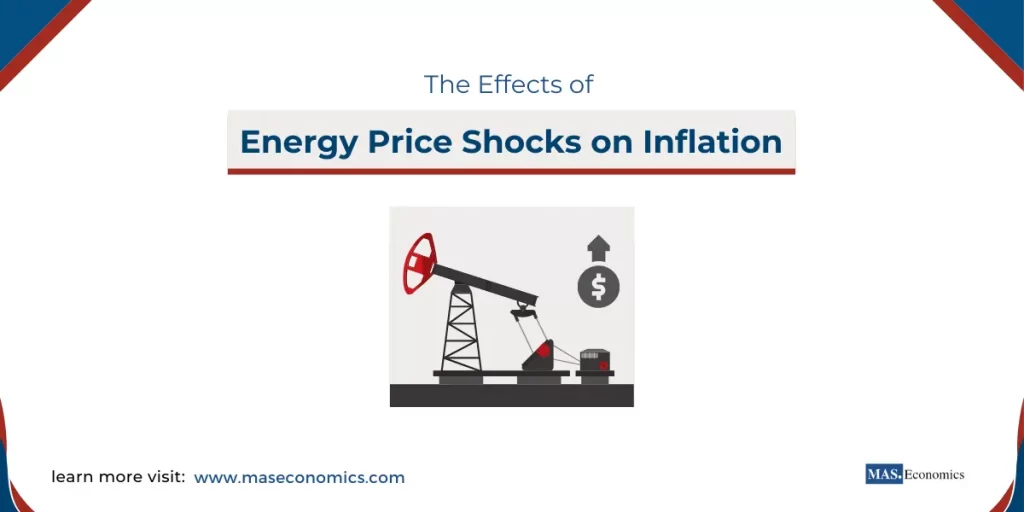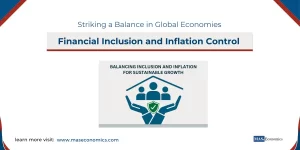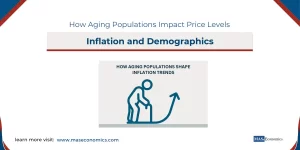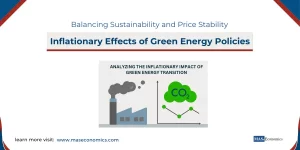The effects of energy price shocks on inflation have historically disrupted economies, significantly increasing production costs, affecting consumer spending power, and triggering severe inflationary pressures. The energy crisis of 2022, driven mainly by geopolitical tensions and global disruptions in energy supply, provides a modern context to better understand these dynamics.
The 2022 Energy Crisis
The energy price shock that began in 2021, escalating into 2022, was heavily influenced by the geopolitical landscape, primarily the war in Ukraine. This led to disruptions in energy supply, particularly affecting oil and gas exports from Russia—a major global supplier. Countries around the world experienced skyrocketing energy prices, similar to what happened in the 1970s during the oil crises when OPEC restricted oil production, leading to substantial increases in oil prices.
Causes of the 2022 Energy Crisis
The 2022 crisis was precipitated by a combination of factors that disrupted global supply chains, heightened inflation, and brought many economies to the brink of a slowdown. The key contributors included:
Geopolitical Instability
The Ukraine war triggered sanctions against Russian oil and gas, leading to severe supply disruptions. This scenario was similar to the oil embargo of 1973, which also had political underpinnings.
Pandemic Recovery
Just as the world economy was recovering from the COVID-19 pandemic, energy demand surged unexpectedly, outpacing the available supply. The misalignment between supply and demand created a perfect storm, resulting in rapid energy price increases.
Sanctions and Supply Chain Strain
Sanctions imposed on Russian energy exports caused a sudden gap in the supply of natural gas and oil, primarily affecting Europe. As one of the largest importers of Russian gas, Europe had to quickly diversify its energy supply, often at higher costs.
The Impact of Energy Price Shocks on Inflation
Comparison with the 1970s Oil Crises
To understand the current crisis, we must draw comparisons with the oil crises of the 1970s, which reshaped global economic policies and highlighted vulnerabilities in the global energy market. During the 1973 oil embargo and the 1979 Iranian revolution, oil prices soared, and inflation shot up in many Western economies, leading to what was termed “stagflation”—high inflation coupled with stagnant economic growth and rising unemployment.
The recent crisis mirrors these past events in several ways. In 2022, the price of crude oil climbed rapidly, while natural gas prices also saw unprecedented hikes. As in the 1970s, countries struggled to manage these disruptions, with central banks and governments forced to adopt a mix of expansionary and contractionary measures to stabilize their economies.
Transmission Mechanism of Energy Price Shocks
Energy price shocks primarily affect inflation through two major channels:
Direct Cost Increase
Rising energy prices increase the cost of goods and services directly because energy is a significant input for industries ranging from manufacturing to transportation. When energy costs surge, companies either pass on these costs to consumers or absorb them, leading to reduced profit margins.
Indirect Inflationary Effects
Higher energy prices can trigger second-round effects where wages rise as workers demand higher compensation to keep pace with rising costs of living. This wage-price spiral can fuel inflation further, creating a sustained inflationary environment. During the 2022 energy crisis, similar second-round effects were observed, with unions in Europe and the United States pushing for higher wages in response to escalating living costs.
Inflationary Pressures Across Economies
Different countries experienced varied inflationary impacts based on their reliance on energy imports and their economic structure. European countries like Germany and Italy, which are highly dependent on imported gas, faced higher inflation compared to nations like the United States, which have more diverse energy sources.
The energy shock of 2022 led to inflation rates reaching over 10% in some European nations, a trend not seen since the aftermath of the 1970s oil crises. This inflationary spike pushed central banks, like the European Central Bank (ECB) and the Federal Reserve, to rethink their monetary policies. They were faced with the challenge of balancing the need to control inflation with the need to avoid a recession. This balancing act is reminiscent of the policy dilemmas faced in the 1970s when central banks had to contend with both high inflation and sluggish economic growth.
Stagflation Concerns
The 1970s Experience
The oil crises of the 1970s brought about the phenomenon of stagflation, which was previously thought to be almost impossible in economic theory. Traditional Keynesian models predicted that high unemployment and high inflation could not coexist, but the energy crises shattered this belief. As a result, many Western economies suffered from both rising prices and increasing unemployment. Central banks responded by tightening monetary policy, leading to higher interest rates and further economic slowdown.
Modern Stagflation Risks
The energy price shock of 2022 reignited fears of stagflation. In both Europe and the United States, inflation surged while economic growth showed signs of stagnation. Central banks, including the Federal Reserve and the ECB, adopted aggressive interest rate hikes to curb inflation, which in turn dampened economic activity. These measures, while necessary to bring inflation under control, also carried the risk of tipping economies into recession—much like what happened in the early 1980s when central banks, led by the US Federal Reserve under Paul Volcker, raised interest rates to unprecedented levels to fight inflation.
Policy Responses to Energy Price Shocks
Fiscal Measures
Governments responded to the energy crisis by introducing subsidies and price caps to shield consumers from the worst effects of rising energy costs. For instance, European countries provided subsidies to households to offset high utility bills, while countries like Germany launched support programs for energy-intensive industries. However, such measures, while politically expedient, carried the risk of further increasing budget deficits, echoing the fiscal challenges faced during the 1970s.
Monetary Policy Interventions
Central banks globally, particularly in developed economies, had to walk a tightrope between tightening monetary policy to control inflation and avoiding economic contraction. The Federal Reserve raised interest rates in a series of steps in 2022 to rein in inflation, reminiscent of the Volcker shock in the early 1980s. However, unlike in the 1970s, modern central banks have more tools at their disposal, such as quantitative easing (QE) and forward guidance, which can help moderate the effects of tightening on economic growth.
In Europe, the ECB faced additional challenges due to the disparate economic conditions across member states. Southern European nations, such as Italy, were particularly vulnerable to the tightening cycle due to their higher levels of public debt, raising concerns about debt sustainability.
Lessons Learned from Energy Price Shocks
Diversification of Energy Supply
One of the most critical lessons from the 1970s oil crises was the need for energy diversification. Countries heavily reliant on a single source of energy supply are particularly vulnerable to price shocks. In response, many countries have started to diversify their energy sources, including greater investments in renewable energy. The 2022 crisis accelerated the shift towards renewables, with countries recognizing the risks of dependency on fossil fuels supplied by politically unstable regions.
The Role of Strategic Reserves
Another lesson from the 1970s was the importance of maintaining strategic petroleum reserves. These reserves provide a buffer against sudden supply disruptions. In 2022, several countries, including the United States, released oil from their strategic reserves to stabilize prices, showcasing the importance of this policy tool in mitigating short-term shocks.
Transition to Renewables
The 2022 crisis underscored the urgent need for a transition to renewable energy. Unlike fossil fuels, which are subject to volatile price swings, renewable energy sources provide a more stable and sustainable alternative. Countries around the world, especially in Europe, have doubled down on their efforts to transition towards renewable energy to reduce their vulnerability to such price shocks in the future.
Conclusion
The effects of energy price shocks on inflation in 2022 offer crucial insights into how such disruptions impact inflation and broader economic stability. By comparing the recent crisis with the oil shocks of the 1970s, we see both similarities and differences in how economies and policymakers have responded. While the causes and immediate effects of these energy shocks may differ, the underlying challenges remain consistent—balancing inflation control with economic stability, diversifying energy supply, and ensuring that fiscal and monetary policies are adequately coordinated.
For modern policymakers, the lesson is clear: proactive diversification of energy sources, a focus on renewable energy, and strategic reserves are key to mitigating the risks associated with energy price shocks. The global experience with energy-induced inflation has shown that while such shocks are inevitable, their effects can be managed through sound economic planning and resilience-building strategies.
FAQs:
What are energy price shocks?
Energy price shocks refer to sudden and significant increases in energy prices, often resulting from geopolitical events, supply chain disruptions, or unexpected changes in global demand. These shocks can cause widespread economic disruption by rapidly increasing the cost of essential goods and services.
How do energy price shocks lead to inflation?
Energy price shocks contribute to inflation by raising production costs, as energy is a key input for many industries. Higher energy costs are passed on to consumers in the form of higher prices for goods and services. Additionally, rising living costs can lead to wage demands, creating a wage-price spiral that further drives inflation.
What caused the 2022 energy crisis?
The 2022 energy crisis was primarily driven by the war in Ukraine, which disrupted global energy supplies, particularly from Russia. Sanctions on Russian oil and gas exports further constrained supply. Additionally, the rapid recovery in energy demand following the COVID-19 pandemic outpaced supply, exacerbating the crisis.
How does the 2022 crisis compare to the oil crises of the 1970s?
Both the 2022 crisis and the 1970s oil crises led to sharp increases in energy prices and significant inflationary pressures. The 1970s crises were driven by OPEC’s production cuts, while the 2022 crisis was largely due to geopolitical tensions and sanctions on Russia. Both periods forced governments and central banks to adopt measures to stabilize their economies.
What is stagflation and how is it linked to energy price shocks?
Stagflation is the simultaneous occurrence of high inflation and stagnant economic growth. Energy price shocks contribute to stagflation by increasing costs, which drive up prices (inflation), while also reducing consumer spending and industrial production, slowing down economic growth.
How do governments typically respond to energy price shocks?
Governments often implement subsidies, price caps, or direct financial assistance to mitigate the impact of rising energy costs on households and businesses. They may also release oil from strategic reserves to increase supply and stabilize prices.
How do central banks react to energy-driven inflation?
Central banks usually respond to inflation caused by energy price shocks by raising interest rates to reduce demand and control price increases. However, they must carefully balance this to avoid slowing down the economy too much or triggering a recession.
Why is energy diversification crucial in mitigating energy price shocks?
Diversifying energy sources reduces dependency on any single type of energy, such as oil or gas, especially from geopolitically unstable regions. This helps mitigate the impact of supply disruptions and price volatility, ensuring more stable energy prices.
What role do strategic reserves play during energy crises?
Strategic reserves act as a buffer during energy crises by providing additional supply when there are significant disruptions. Releasing reserves helps stabilize prices and ensures that essential energy needs are met during periods of scarcity.
How does the transition to renewable energy help in dealing with energy price shocks?
Renewable energy provides a more stable and sustainable energy supply, reducing reliance on fossil fuels that are subject to geopolitical risks and price fluctuations. By investing in renewables, countries can insulate themselves from future energy price shocks and achieve greater energy security.
Thanks for reading! Share this with friends and spread the knowledge if you found it helpful.
Happy learning with MASEconomics




